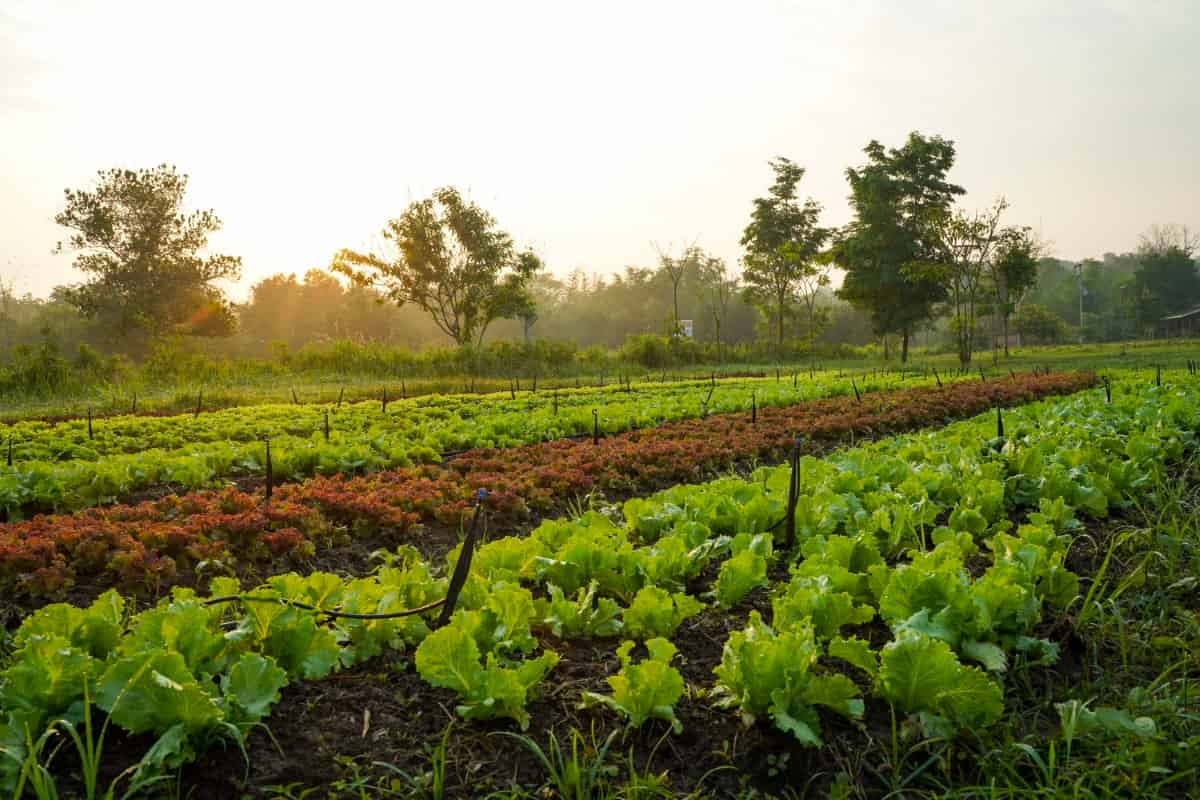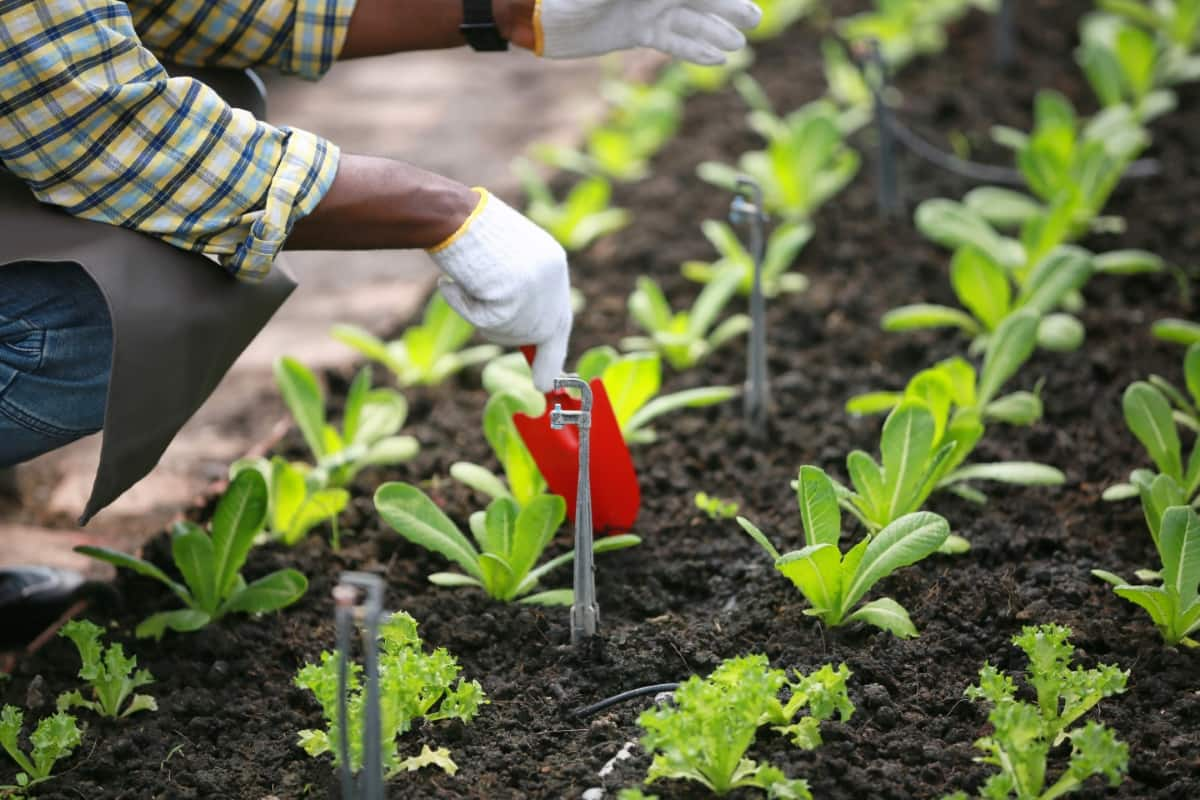Organic farming has gained popularity for its environmental benefits and potential for higher profits. Still, it’s important to understand the various costs involved, from setup and operational expenses to marketing and certification. This article provides a detailed analysis of the costs per acre in organic farming, comparing them with conventional farming and exploring their impact on profitability.

Organic Farming Costs Per Acre
Factors Affecting Organic Farming Costs
These costs are impacted by the type of crops grown, the location of the farm, climate conditions, and the scale of production. For instance, organic farming of vegetables might require more intensive labor and management compared to grains or forage crops, thus increasing the cost. The cost of acquiring organic seeds and the need for specific types of organic fertilizers also play a significant role.
Additionally, organic farms often require a more significant investment in soil fertility management and pest control strategies that are environmentally friendly but can be more costly than conventional methods. Furthermore, achieving and maintaining organic certification adds to the overall expenses, as it involves compliance with strict standards and regular inspections.
Comparative Analysis of Organic vs. Conventional Farming
In a comparative analysis of organic versus conventional farming costs per acre, several key differences emerge. Typically, organic farm startup costs are higher due to the need for organic seeds, natural fertilizers, and non-chemical pest control methods. For example, the organic farming setup cost might include an initial investment of about $1,000 to $2,000 per acre, depending on the crop and location.
In contrast, conventional farming costs per acre are often lower, with expenses for chemical fertilizers and pesticides typically ranging between $600 to $800 per acre. However, the profit in organic farming can be significantly higher due to the premium price of organic products in the market. The most profitable organic farming ventures often achieve a higher organic farming profit per acre, sometimes as much as 20-30% more than conventional farming, depending on the crop and market conditions.
Economic Viability of Organic Farming: Costs and Returns Per Acre
The economic viability of organic farming, in terms of costs and returns per acre, is a critical aspect for farmers considering this method. The organic farming setup cost, including land preparation, organic certification, and initial inputs like seeds and natural fertilizers, can range from $1,200 to $2,000 per acre. Despite these higher initial costs, the profit of organic farming can be quite attractive. For example, organic farming of vegetables can yield returns of about $5,000 to $10,000 per acre, significantly higher than many conventional crops.
Understanding the Operational Expenses
Operational expenses in organic farming per acre vary widely based on the type of crop and farming practices. A major component of these expenses is the cost of organic inputs like fertilizers and pest control methods. For example, organic fertilizers and soil amendments can cost about $100 to $300 per acre, depending on the crop requirements. Pest management in organic farming, relying on natural methods and biological control, can add another $50 to $150 per acre.
In case you missed it: Types of Organic Fertilizers and How They Help Plants Grow

Additionally, water management, crucial for organic farming, may involve expenses for efficient irrigation systems, potentially costing a few hundred dollars per acre. Crop rotation and cover cropping, essential practices in organic agriculture for soil health, also contribute to operational costs. However, they can help reduce long-term expenses by improving soil fertility and reducing pest problems.
Breakdown of Labor Costs
Labor costs in organic farming per acre are generally higher than in conventional farming due to the labor-intensive nature of organic practices. For instance, weed control in organic systems often relies on manual or mechanical methods rather than chemical herbicides, leading to increased labor requirements.
Depending on the scale and efficiency of the farm, labor costs for organic farming can range from $150 to $300 per acre. These costs are even higher for organic farming vegetables, which require more meticulous care and frequent handling. Harvesting, a labor-intensive process, particularly in organic vegetable farming, can contribute significantly to these costs.
Assessing Input Costs
Assessing input costs in organic farming per acre is crucial for understanding its economic viability. The primary inputs in organic farming include organic seeds, natural fertilizers, and biological pest control methods. Organic seeds are typically more expensive than conventional ones, costing about $50 to $100 more per acre.
Natural fertilizers, such as compost and animal manure, can cost between $100 to $300 per acre, depending on the crop and soil requirements. Biological pest control methods, though effective, also add to the costs, with expenses ranging from $50 to $150 per acre. Additionally, soil amendments and organic-certified products for disease management contribute to the input costs.
Analyzing Machinery and Equipment Costs
Machinery and equipment costs in organic farming per acre differ from conventional farming due to the unique requirements of organic practices. Organic farmers often invest in specialized equipment for mechanical weed control, such as precision cultivators and flame weeders, which can cost anywhere from $500 to $2,000 per acre, depending on the technology and scale.
In case you missed it: How to Create an Organic Farming Business Plan for Vegetable Crops

Furthermore, since organic farming emphasizes soil health, equipment for regular composting and soil aeration, like compost spreaders and aerators, is crucial, adding to the overall machinery expenses. These machines, while representing a significant upfront investment, are vital for maintaining the organic integrity of the farm and reducing reliance on labor-intensive practices.
Estimating Infrastructure and Maintenance Costs
Infrastructure and maintenance costs in organic farming per acre play a significant role in the overall financial planning of an organic farm. Infrastructure includes investments in buildings for storage, processing facilities, and protective structures like greenhouses or hoop houses, which can range from $1,000 to $5,000 per acre, depending on the scale and complexity. Maintenance costs cover the upkeep of farm infrastructure, machinery, and equipment essential for efficient farm operation. These costs can be about $100 to $300 per acre annually, varying with the type of equipment and infrastructure in place.
Evaluating Marketing and Certification Costs
Marketing and certification costs in organic farming per acre are critical factors that influence the net profitability of organic farms. Certification costs, which are essential for farms to label and sell their produce as organic, can range from $200 to $1,000 per acre annually, depending on the certifying agency and farm size. This cost includes application fees, inspection charges, and annual renewal fees.
In case you missed it: How to Create an Organic Farming Business Plan for Horticulture Crops

Marketing costs involve expenses related to branding, promoting, and distributing organic products. For direct-to-consumer sales channels, such as farmers’ markets or community-supported agriculture (CSA) programs, marketing costs might be lower, around $100 to $300 per acre. However, for broader market access, including retail or online platforms, marketing expenses can be higher due to the need for more sophisticated branding and outreach strategies.
Conclusion
While organic farming presents higher initial setup and ongoing operational costs compared to conventional farming, its economic viability is supported by the premium market prices for organic products.
- Feed Your Flock for Less: Top 10 Tips to Save on Chicken Feed
- Ultimate Guide to Ossabaw Island Hog: Breeding, Raising, Diet, and Care
- Hatching Answers: The Top 10 Reasons Your Chickens Aren’t Laying Eggs
- Eggs and Economics: Breaking Down the Cost of Raising Backyard Chickens
- Defend Your Greens: Proven Methods to Keep Iguanas Out of Your Garden
- Ultimate Guide to Cinnamon Queen Chicken: A Comprehensive Guide for Beginners
- Ultimate Guide to California Tan Chicken: Breeding, Raising, Diet, Egg-Production and Care
- Ultimate Guide to Marsh Daisy Chicken: Breeding, Raising, Diet, and Care
- 10 Types of Chicken Farming Businesses You Can Start for Profits